
- Home
- Travel Packages
- Top Destination
-
Travel Attraction
By Category
Top Attraction

- Travel Agents
- Car Rentals
- Hotels
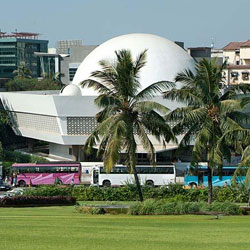
One of India finest architects J.M.Kadri designed this beautiful landmark building which houses Nehru Planetarium. Nehru Centre of Science is also located here. 8 Kms. from the city centre is located a centre telling about the universe. It unfolds the mysteries of the cosmos. They also screen regular film shows on the outer space, which are of particular interest for children. Close by is the Nehru Science centre, which is a science park, and permanent exhibits on intricacies of life. The antique models of Railway engines, aeroplanes, tramcar and steam lorry are exciting to see. Nehru Planetarium is the only astronomical centre in Mumbai, which is also a concert cum movie auditorium. This is the place, recreating the image of the sky as seen from anywhere on the earth at any time. It exhibits collections of lunar and astronomical photographs.
Explore More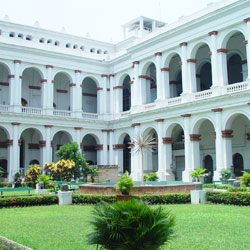
This museum was built in 1875,which was originally founded by Nathaniel Wallich, known as Jadughar, located at the corner of Sudder Street and Chowringhee Road, containing fossil skeletons of prehistoric animals, art collections, rare antiques, mummies, Armour etc. which is probably one of the best in Asia. It certainly the largest and probably the best Museum in India, and one of the best in Asia.
Explore More
This is the largest planetarium in the World near the Government of India tourist office providing a view of the stars and the solar system. For enthusiasts of Astronomy this is a place not to be missed. One of the largest in Asia, close to the crossing of Theatre Road and Chowringhee Road, the Birla Planetarium is adjacent to the Maidan. The planetarium is a single storeyed, circular structure constructed in pure Indian architectural style. The central dome has a diameter of 27m shaped in imitation of the Buddhist Stupa at Sanchi. The central hall can accommodate 500 persons. Interesting exhibits are the fine collections of paintings, celestial models and busts of famous astronomers that line the corridors. The gigantic planetarium projector accessories comprise of 29000 parts and combine to portray on the inner ceiling of the planetarium, the naked face of space, Stars, planets and heavenly bodies.
Explore More
Housed in the former residence of the Lieutenant Governor of Bengal popularly known as Belvedere Estate, The Calcutta public library and Imperial Library amalgamated in 1903 to become National Library, which is supposed to be India's largest library. The erstwhile sprawling residence of the Lieutenant Governor of Bengal, at Belvedere, is a depiction of the Italian Renaissance style. The building that houses the National Library was originally constructed as the Vice regal House around 1700. Meant as a symbol of imperial power, it was built on a grand scale with a high arched gateway, sprawling lawns and ornate halls.
Explore More
The Salar Jung Museum contains the rich & beautiful collection of a man named Nawab Salar Jung III. The museum is located near the river and houses some of the most ancient and rarest objects. In his times, Nizam of Hyderabad was reckoned amongst the richest men present in the world. There are around 35,000 objects of art, which includes clocks, paintings, jade, swords, miniature paintings, jewellery, statuary and Persian manuscripts. There are various priceless treasures like the turban of Tipu Sultan of Mysore, an ivory chair, the exquisite dagger of Nurjahan the Mughal empress and the dressing table of Marie /Antoinette. The museum displays various items that belong to the prehistoric times and also a pavilion, which comprises of the replicas of Ajanta Frescoes.
Explore More
Located in Worli the Nehru Science Museum with sound light gallery has an attractive childrens section. It is the only place, which recreates the image of sky as seen from anywhere on earth at any time. It also has a collection of warplanes, which served the Indian air force. Nehru planetarium was commissioned in 1977 and designed by one of India's finest architects I.M.Kadri. Nehru Centre, a trust headed by the Chief Minister of Maharashtra State, runs it. An astronomical exhibition, comprising of 40 exhibits (transparencies and working model) explain the cosmos. In the auditorium, a breathtaking 'Sky Show' captures the very essence of the Milky Way or Akashganga. Two hundred projectors are simultaneously trained onto a hemispherical ceiling made of aluminum. The effect is realistic and it is not surprising that the planetarium has attracted more than 3 million visitors.
Explore More
It opened in 1986 and now houses the Discovery of India exhibition, an art gallery, theatre and restaurant. Inspired by Nehru's book of the same name, it seeks to explore 5000 years of history by investigating the geographical, social, culture and political forces at play in the subcontinent. It's highly informative in a school trip kind of way. But then it's best to concentrate on just a couple of the major themes, such as the detailed exhibits depicting Nehru's life and times. Other interesting topics include the Mauryan Empire, the impact of the west and the struggle for independence. Children below five years of age not allowed into the Sky Theatre. The Nehru Planetarium is closed on Mondays. It was in 1972 that the Nehru Centre was conceived by the late Shri Rajni Patel and others as a living memorial to the maker of modern India, who symbolized the ideals of enlightened curiosity, scientific temper, secular values, a world view and above all, a faith in the people of India. The late Smt. Indira Gandhi laid the foundation stone of this magnificent dream on November 2, 1972 on a six-acre plot leased by the Government of Maharashtra.
Explore More
Built in memory of Gandhiji, the memorial is a good example of modern architecture. Every year on Gandhiji's birthday 2nd October, the sun's rays fall at the exact spot where the urn was displayed before immersion. It resembles an Orissan temple. Built in memory of Gandhiji, the memorial is good example of modern architecture. Here, the last remains of Gandhiji are kept for public viewing. Next to the Kumari Amman Temple, this striking memorial stored the Mahatma's ashes until they were immersed in the sea.
Explore More
Situated in Bhopal, The Indian Bharat Bhawan is a multi-arts museum and complex. The place was developed by the Government of Madhya Pradesh and opened for the public in the year 1982. The institution is run by an autonomous Trust of 12 members. The location of The Indian Bharat Bhawan is mesmerizing, as it faces the Upper Lake in Bhopal. The structure is a hub that houses fine art workshops, an art gallery, a studio theatre, an open-air amphitheater, a museum for tribal and folk art, an auditorium and libraries of folk music/ classical music/ Indian poetry. The Indian Bharat Bhawan was inaugurated by then Prime Minister, Indira Gandhi. Since the place opened, it has become an important cultural institution of India. It is believed to the best cultural place that attracts a lot of scholars, artists and students from Mumbai, Indore, Kolkata and various place of the world.
Explore More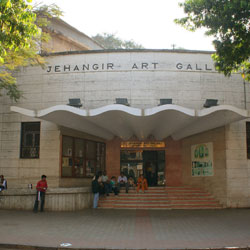
A prime art gallery in the city of Mumbai Jehangir Art Gallery caters to the artistic tastes of people. This is situated behind the museum and has four exhibition halls. Facing Elphistone College and adjacent to the Prince of Wales Museum, this gallery situated at Kala Ghoda is the most prestigious and modern venue for Indian artists. It was built in the year 1952. Managed by the Bombay Art Society, the entire cost of this beautiful mansion was donated by Cowasji Jehangir. This gallery is one of the city's most highly visible art galleries and having to exhibit a work of art here is a great treat for artists. The unending list of applicants to have their work put up on the walls of this gallery speak for itself of the great importance and the media attention one attracts. Some might have to wait a couple of years to have their work put up here.
Explore More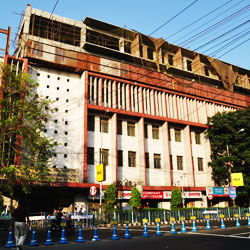
Sir William Jones founded this Asiatic Society in 1784 under the patronage of Warren Hastings, which is famous for collection of Indology, Literature and Scientific Research of about 20000 volumes including some 8000 rare Sanskrit, Arabic, Persian and Hindi manuscripts. The Society containing material of utmost importance publishes the Journal of The Asiatic Society of Bengal and The Proceedings. The Library contains approximately 20,000 volumes inclusive of 8,000 rare Sanskrit, Arabic, Persian and Hindi manuscript. The archaeological relics, geological and ethnological specimens whom the museum of this society possessed formed the nucleus of the Indian Museum opened in 1875. Sir William Jones founded this Society, in order to advance the study of Indology. Intended for literary and scientific research.
Explore More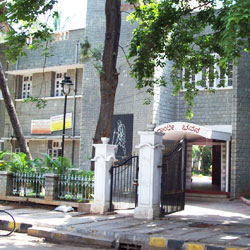
Gandhi Bhavan of bangalore is dedicated to Mahatma Gandhi, the Father of the Nation. The Bhavan was set up with the intention of promoting the life and teachings of Gandhiji. Situated on the Kumara Krupa Road, Gandhi Bhawan was started as Gandhi Smaraka Nidhi, under the chairmanship of Dr Rajendra Prasad.The Gandhi Smarak Nidhi, housed in the Gandhi Bhavan seeks to propagate the life and teachings of Gandhiji. The Gandhi Smarak Nidhi has organized a comprehensive picture gallery depicting Gandhiji's life in pictures from early childhood to the last day. Photostat copies of letters written by him to various personalities of his day can also be seen. The gallery has photographs of Mahatma Gandhi, from early childhood to the last day of his life. Apart from that, there are also Photostat copies of the letters written by him to the various personalities of his time.
Explore More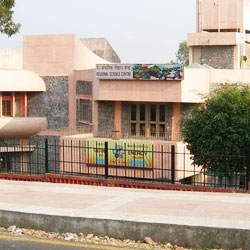
The Regional Science Centre is situated in the Shyamla Hills area of Bhopal, India. The place is constructed with the mission to popularize science and technology among people and specially among students. The place was inaugurated in the year 1995 by the then president Mr. Shankar Dayal Sharma. The place is a popular destination and one of the constituent units of the National Council of Science Museums or NCSM. The Regional Science Centre is open every day of the week. However, it is closed on festivals of Holi and Diwali. The centre incorporates over 266 science exhibits out of which most are interactive. The campus of The Regional Science Centre spans over 5-acre out of which 3-acres are dedicated to the Science Park that consists of more than 60 exhibits. Besides the park, the centre has a zoo and a small Dinosaur Park.
Explore More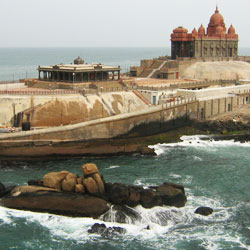
On the seaside is built a large, beautiful memorial dedicated to the Indian philosopher, Swami Vivekananda, who is said to have meditated here before setting out as one of India's most important religious crusaders. There is a Dhyana Mandapam for one to sit in a serene atmosphere and meditate. This memorial is on two rocky islands projecting from the sea about 400 m offshore. The Indian philosopher Swami Vivekananda came here in 1892. The memorial has been built on the Vivekananda Rock where the great philosopher - guide Swami Vivekananda went into meditation that transformed him into one of the most charismatic spiritual leaders of this century. The mandapam, standing here in his memory, was built in 1970 reflecting architectural styles from all over India. Kanyakumari is famous for Vivekananda's rock, a huge stone rising out of the sea. It now houses the statue of Vivekananda with his memorial. Not surprisingly, Kanyakumari is a popular destination for Vivekananda's followers, so there are many Bengalis here, and some Bengali hotels and restaurants too.
Explore More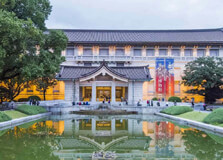
The Tokyo National Museum (TNM) is Japan's oldest and largest museum dedicated to the collection, preservation, and display of Japanese art and cultural heritage. Located in Ueno Park, Tokyo, it is one of the country's most important institutions for cultural education and historical preservation. With its vast collection of artifacts, the museum offers a deep dive into Japan's rich and diverse history, spanning centuries of traditional art, archaeology, and cultural heritage. How to Reach Tokyo National Museum, Tokyo The Tokyo National Museum is easily accessible via public transport. The most convenient way to reach the museum is by taking the Tokyo Metro or the JR train system: By Train: The nearest station is Ueno Station, which is just a short 10-minute walk from the museum. Ueno Station is well-connected to the JR Yamanote Line, the Ginza Line, and the Hibiya Line. By Bus: Several buses from different parts of Tokyo also stop near Ueno Park, where the museum is located. By Taxi: If you prefer, you can take a taxi to Ueno Park, which is where the Tokyo National Museum is situated. Weather in Tokyo The weather in Tokyo varies greatly throughout the year. Here's a quick overview: Spring (March to May): Spring in Tokyo is generally mild, with cherry blossoms in full bloom during April, making it a popular time to visit. Summer (June to August): Summer can be hot and humid, with temperatures often reaching up to 30°C (86°F). July and August also bring occasional rainstorms due to the monsoon season. Autumn (September to November): The weather in autumn is cool and pleasant, with colorful fall foliage attracting many visitors to the museum and Ueno Park. Winter (December to February): Winter in Tokyo is cold but not extreme, with temperatures ranging from 4°C (39°F) to 10°C (50°F). Snowfall is rare, and the clear skies make it an excellent time for sightseeing. Timing and Opening Hours The Tokyo National Museum is open every day except for Mondays (unless it is a national holiday). The usual opening hours are: Opening Hours: 9:30 AM – 5:00 PM Last Entry: 4:30 PM Closed: Mondays (except for national holidays), New Year's holidays (December 28 – January 1), and certain special exhibition closures. Why is the Tokyo National Museum Famous? The Tokyo National Museum is famous for its vast and diverse collection of artworks, cultural relics, and artifacts. It houses over 110,000 items, including national treasures and important cultural properties that span various eras of Japanese history. The museum's collections are divided into several permanent galleries that showcase artifacts from ancient Japan, including samurai armor, traditional calligraphy, ceramics, Buddhist statues, and textiles. Additionally, the museum is also known for its rotating exhibitions that feature both Japanese and international art and culture. Entry and Visit Details The Tokyo National Museum offers a comprehensive experience for visitors, including access to permanent and special exhibitions. The entry fees are as follows: General Admission: ¥620 (for adults) Discounted Admission: ¥410 (for senior citizens, students, and groups of 20 or more) Free Admission: Children under 18, individuals with disabilities, and certain special days may offer free entry. To avoid long queues, it is recommended to purchase tickets online or early in the day. The museum also offers audio guides and group tours for a more in-depth exploration of the exhibits. History and Architecture Founded in 1872, the Tokyo National Museum was established with the aim of preserving and promoting Japan's artistic and cultural heritage. Its original collection consisted primarily of archaeological items, many of which were excavated during the Meiji period. Over the years, the museum expanded and modernized its facilities, now consisting of several buildings, each dedicated to different types of artifacts. Architecturally, the Tokyo National Museum blends traditional Japanese aesthetics with modern museum design. The main building, the Honkan (Japanese Gallery), was designed in the early 20th century in the Western-style, while the Horyu-ji Gallery showcases a more traditional architectural approach. The museum is surrounded by lush gardens and beautiful landscapes, adding to its serene and historical atmosphere. Things to Do at the Tokyo National Museum While visiting the Tokyo National Museum, there are numerous activities and experiences you can enjoy: Explore the Permanent Exhibitions: Discover the museum's incredible collection of Japanese art, historical artifacts, and archaeological finds. Visit Special Exhibitions: Be sure to check out the rotating special exhibitions, which feature unique collections from Japan and abroad. Stroll Through Ueno Park: After visiting the museum, take a leisurely walk through Ueno Park, known for its beautiful nature and historic sites. Attend Cultural Events: The museum often hosts events such as traditional tea ceremonies, calligraphy workshops, and cultural performances. Interesting Facts and Tips about the Tokyo National Museum Over 110,000 Artifacts: The Tokyo National Museum houses over 110,000 pieces in its collection, including numerous national treasures. Free Entry on Certain Days: On certain holidays like "Museum Day" or special events, entry may be free or discounted. Guided Tours: Free guided tours are available in English and Japanese. It’s an excellent way to gain deeper insights into the exhibits. Photography: Photography is allowed in most galleries, but flash photography is strictly prohibited. Bring Comfortable Shoes: The museum is large, so be prepared to do a fair amount of walking. Conclusion The Tokyo National Museum is a must-visit destination for anyone interested in exploring the rich history, culture, and artistic heritage of Japan. Whether you’re a history enthusiast, art lover, or simply looking for an educational experience, the museum offers something for everyone. Its vast collection of artifacts, stunning architecture, and serene location make it an unforgettable stop on your visit to Tokyo.
Explore More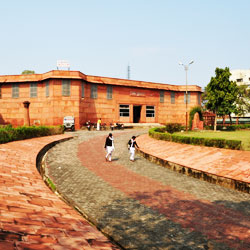
Cunnigham, Growse, Fuhrer and others unearthed the rich treasure of antiquarian values, which form the nucleus for the present museum located at Dampier Park, Mathura. It houses rich collections of fine sculpture, terracotta, bronze objects of the Maurya, Sunga, Kushan and Gupta periods. It also houses the famous standing Buddha from the 5th century AD.
Explore More
George Wittet designed this Indo- Saracenic style building, which houses the Prince of Wales Museum. It also houses a priceless collection of art, sculpture, a fine collection of miniature paintings and much more. Amid the hustle and bustle of Mumbai stand some stately buildings, remnants of the British Raj. Among them is the Prince of Wales Museum, named after Prince George (Later George V) who visited India in 1905 and laid the foundation stone of the building. Through the arch the Prince made his royal entrance to India as King George V for the Delhi Darbar in 1911. This four-tiered goliath houses a priceless collection of over 2000 miniature paintings from various stylistic schools in India. Among other artifacts feature a sizeable number of relics of the Indus Valley Civilisation and instances of Tibetan and Nepalese art.
Explore More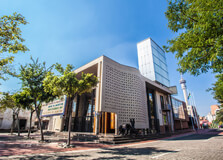
Constitution Hill, located in Johannesburg, South Africa, is a historical landmark that is rich in both political and cultural significance. It is not only a place of historical importance but also a symbol of South Africa’s transition to democracy. The hilltop complex houses several significant buildings, including the Constitutional Court, the Old Fort Prison, and the Women’s Jail. These landmarks represent the fight for human rights, justice, and equality that shaped the country’s modern democratic state. History of Constitution Hill The history of Constitution Hill spans many decades, beginning in the late 19th century when the site was originally home to a military fort built by the British in 1892. This fort was later used as a prison during the apartheid era. Constitution Hill’s most notable feature is the Old Fort Prison, which became notorious for housing political prisoners, including several prominent leaders who fought against apartheid. During the apartheid period, many activists, including Nelson Mandela, Mahatma Gandhi, and others, were imprisoned at this facility. The Women’s Jail, another key part of Constitution Hill, also saw many women activists detained, including those who fought against apartheid. The transformation of this site from a place of oppression to a beacon of freedom and justice is part of South Africa’s broader narrative of overcoming apartheid. In 1994, with the end of apartheid and the establishment of a democratic South Africa, Constitution Hill became the site for the new Constitutional Court, the highest court in South Africa. This move symbolized the country’s commitment to justice, human rights, and the rule of law, making Constitution Hill one of the most significant places in the country today. Why is Constitution Hill Famous? Constitution Hill is famous for being the site of South Africa’s Constitutional Court, which plays a crucial role in upholding the country’s Constitution and ensuring the protection of human rights. It is a symbol of the country’s transition from apartheid to a democratic society, and it stands as a reminder of the struggle for justice and equality that many South Africans endured. The site is also renowned for its historical significance. The Old Fort Prison and the Women’s Jail have become important symbols of the oppression faced by those who fought against apartheid. The stories of the prisoners who were detained at these facilities serve as a powerful reminder of the resilience and determination of those who fought for freedom. How to Reach Constitution Hill, Johannesburg Constitution Hill is centrally located in Johannesburg and is easily accessible by car, public transport, and even on foot from various points in the city. The address for Constitution Hill is 11 Kotze Street, Braamfontein, Johannesburg, which is a short distance from the city center. If you are driving, Constitution Hill is easily accessible from major routes, including the M1 highway. There is parking available at the site for visitors, though it can be limited during peak times. If you are using public transport, you can take a taxi or a minibus from central Johannesburg or other nearby areas. There are also bus stops near the entrance of Constitution Hill. For those staying in nearby hotels, Constitution Hill is a short walk away from the popular area of Braamfontein, known for its vibrant culture, cafes, and art scene. There are also guided tours available that provide convenient transportation and a deeper understanding of the site’s history and significance. Weather at Constitution Hill, Johannesburg Johannesburg enjoys a mild and temperate climate, with warm summers and cooler winters. The summer months (November to February) can get quite hot, with temperatures ranging from 20°C to 30°C (68°F to 86°F). This is also the rainy season, with afternoon thunderstorms being common. Visitors should be prepared with sun protection and an umbrella or raincoat during this time. In winter (June to August), temperatures are cooler, ranging between 5°C and 20°C (41°F to 68°F). The days are generally sunny and dry, but the evenings can get chilly. It's advisable to wear layers, as the temperature can fluctuate throughout the day. Timing and Opening Hours Constitution Hill is open every day of the week, with general visiting hours from 9:00 AM to 5:00 PM. The site offers a range of tours, including self-guided and guided options, and the last guided tour typically begins around 4:00 PM. The Constitutional Court is open to the public, and visitors can observe its operations during business hours. However, it’s important to note that the court may not be open to the public during special sittings or hearings, so it's best to check ahead if you wish to attend a court session. It is recommended to arrive early to fully explore the site and take part in one of the guided tours, which provide an in-depth look at the history and significance of Constitution Hill. Tours are available in various languages, including English and Afrikaans, and can be tailored to suit different group sizes. Entry and Visit Details Entry to Constitution Hill requires a ticket. The cost of the ticket varies depending on the type of tour you wish to take. General entry fees for adults are around 80 ZAR, with discounted rates for students and children. There are also group discounts and special rates for schools and educational institutions. For those who want to experience the full historical significance of Constitution Hill, the site offers several guided tours, including a general tour of the Old Fort Prison, the Women’s Jail, and the Constitutional Court. The tours provide fascinating insights into South Africa’s apartheid history, the struggle for freedom, and the pivotal role of the Constitution in the country’s democracy. Visitors can also explore the Constitutional Court's beautiful building, which is renowned for its architecture and design, symbolizing the nation’s commitment to justice. History and Architecture The architecture of Constitution Hill is both historical and modern, symbolizing the country’s transition from oppression to freedom. The Old Fort Prison was built in the late 19th century and consists of red brick buildings with strong, imposing walls, designed to keep prisoners under tight control. These structures are now preserved as part of the site’s heritage, with interactive exhibitions and displays telling the story of those who were detained here. The most striking part of Constitution Hill is the Constitutional Court building, which was designed by the renowned architectural firm, Noero Wolff Architects. The court is a contemporary masterpiece with a unique design that incorporates elements of South African culture and history. Its open and welcoming design stands in stark contrast to the dark history of the Old Fort Prison. The court’s design features large glass windows, natural materials, and artwork that symbolizes reconciliation, democracy, and human rights. Things to Do at Constitution Hill Take a Guided Tour: One of the best ways to experience Constitution Hill is by taking a guided tour. The knowledgeable guides provide fascinating details about the site’s history, architecture, and its role in South Africa’s democratic journey. Visit the Constitutional Court: Visitors can enter the Constitutional Court and learn about its pivotal role in the country’s legal system. The court is open to the public, and you can sometimes witness live court proceedings. Explore the Old Fort Prison: Wander through the Old Fort Prison and Women’s Jail, where you can learn about the brave individuals who were imprisoned during apartheid. The exhibits are interactive, offering visitors an immersive learning experience. Art and Exhibitions: Constitution Hill is home to various art pieces and exhibitions that showcase South Africa’s journey toward democracy. The site also features a museum that details the country’s apartheid history. Attend Public Events: Throughout the year, Constitution Hill hosts various cultural events, including lectures, performances, and exhibitions related to South Africa’s political history and contemporary issues. Facts About Constitution Hill Constitution Hill was originally a military fort and later became a prison complex, where many famous political prisoners, including Nelson Mandela, were detained. The Constitutional Court, located on the site, is the highest court in South Africa and was established after the end of apartheid in 1994. The Women’s Jail at Constitution Hill housed many female political prisoners, including those who were leaders in the anti-apartheid struggle. The design of the Constitutional Court building incorporates African artwork, which symbolizes the country’s unity and commitment to human rights. The site is a UNESCO World Heritage Candidate and is regarded as one of the most important cultural landmarks in Johannesburg. Tips for Visiting Constitution Hill Arrive early: It’s recommended to arrive early to enjoy the full experience and take a guided tour of the site. Wear comfortable shoes: There is a lot to explore on foot, so make sure to wear comfortable shoes during your visit. Bring water: Be sure to bring water, especially during the hotter months, as you will be walking around the site for extended periods. Check the schedule: If you are interested in attending a live court session or a special event, be sure to check the schedule in advance. Respect the history: Constitution Hill is a place of profound historical importance. Be respectful of the exhibits and the stories shared here. Conclusion Constitution Hill is an essential destination for anyone visiting Johannesburg. It offers a powerful glimpse into South Africa’s painful past and its inspiring journey toward democracy. The site’s history, architecture, and dedication to human rights make it a must-visit for anyone interested in understanding the country’s transformation. Whether you're exploring the Old Fort Prison, walking through the Women’s Jail, or visiting the Constitutional Court, Constitution Hill offers a thought-provoking and educational experience for all who visit.
Explore More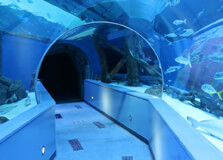
Sharjah Aquarium is one of the top attractions in Sharjah, offering a fascinating journey through the underwater world of the Arabian Gulf. The aquarium is an ideal spot for families, school groups, and marine enthusiasts to learn about the diverse marine life found in the waters of the UAE and beyond. Located near the coast of Al Khan Lagoon, the Sharjah Aquarium provides visitors with the opportunity to explore a variety of exhibits showcasing marine species such as fish, turtles, and rays. With its immersive exhibits and educational displays, the aquarium offers an engaging experience for all ages, highlighting the beauty and importance of marine conservation. How to Reach Sharjah Aquarium, Sharjah Sharjah Aquarium is located in the Al Khan area of Sharjah, making it easily accessible for visitors coming from different parts of the city. If you are traveling from Dubai, it is about a 30-minute drive via the E11 highway, which connects Dubai to Sharjah. From the Sharjah city center, it is just a short 10-15 minute drive. The aquarium is well signposted, so once you are in the Al Khan area, you won't have trouble finding it. For those using public transportation, taxis are widely available throughout Sharjah, and you can easily catch a ride to the aquarium. While there are no direct public bus routes to the aquarium, taxis or ride-sharing services like Uber and Careem are convenient and affordable options. Visitors staying in nearby hotels or areas such as Al Qasba or Al Majaz can reach the aquarium with minimal travel time. Weather at Sharjah Aquarium, Sharjah Sharjah, like much of the UAE, experiences a hot desert climate, characterized by scorching summers and mild winters. The best time to visit the Sharjah Aquarium is during the cooler months, from November to March, when temperatures range between 15°C to 25°C (59°F to 77°F). During the summer months (June to September), temperatures can exceed 40°C (104°F), so visiting the aquarium in the morning or late afternoon is advisable to avoid the intense heat. The aquarium is fully air-conditioned, ensuring a comfortable experience year-round, regardless of the outdoor weather conditions. Timings of Sharjah Aquarium, Sharjah The Sharjah Aquarium is open daily from 8:00 AM to 8:00 PM, giving visitors plenty of time to explore its many exhibits. However, hours may change during public holidays, special events, or the holy month of Ramadan, so it’s a good idea to check ahead on the aquarium’s official website or call for the most up-to-date information. The aquarium offers visitors the flexibility to visit at different times of the day, whether for a morning educational trip or an evening outing. It is advisable to allocate at least 1.5 to 2 hours for a full tour of the aquarium. Why Sharjah Aquarium is Famous Sharjah Aquarium is famous for its impressive collection of marine life from the Arabian Gulf, as well as its commitment to marine conservation and education. The aquarium showcases over 150 species of marine creatures, from colorful tropical fish to sharks, rays, and sea turtles. One of the highlights of the aquarium is the array of local species, such as the endangered dugong, which is native to the Arabian Gulf. The aquarium is also home to several large tanks that simulate the natural habitat of these creatures, providing a unique and immersive experience for visitors. Aside from its impressive collection of marine life, Sharjah Aquarium is known for its interactive exhibits and educational programs. The aquarium focuses on promoting awareness about marine conservation and the protection of endangered species. It regularly hosts workshops and special events, making it a popular destination for school groups and families. The aquarium’s central location in Sharjah also makes it easily accessible to both locals and tourists, contributing to its popularity as a family-friendly attraction in the city. Entry and Visit Details about Sharjah Aquarium, Sharjah Entry to the Sharjah Aquarium is affordable, with ticket prices generally ranging from 10 AED to 15 AED for adults. Tickets for children and senior citizens may be available at discounted rates. The aquarium offers an engaging and educational experience for all visitors, with various exhibits dedicated to different marine environments and species. The aquarium is fully accessible to visitors with special needs, providing a comfortable experience for all guests. Once inside, you can explore the different sections of the aquarium at your own pace, enjoying the detailed information about each marine species displayed in the exhibits. There are also opportunities for hands-on interaction in some areas, where visitors can touch starfish or other marine creatures in designated pools. If you’re interested in a more detailed experience, you can book a guided tour, which provides in-depth insights into the marine life of the Arabian Gulf and the aquarium’s conservation efforts. History and Architecture of Sharjah Aquarium Sharjah Aquarium opened its doors in 2008 and was designed to provide visitors with an educational and interactive experience that highlights the rich marine life of the Arabian Gulf. The aquarium is housed in a modern and spacious building, with various galleries and tanks designed to showcase the diverse marine ecosystems found in the region. The architecture is sleek and contemporary, with large windows offering panoramic views of the surrounding area and the water tanks inside. The design of the building is meant to reflect the fluidity and beauty of the ocean, while also providing visitors with a comfortable space to explore the exhibits. The aquarium’s exhibits are thoughtfully curated to simulate different underwater environments, including coral reefs, mangroves, and the deep sea. The tanks are designed to replicate the natural habitats of the species on display, providing an immersive and educational experience for visitors. The architecture is focused on enhancing the experience of exploring these marine environments, with well-lit exhibits and interactive displays that highlight the importance of ocean conservation. Things to Do at Sharjah Aquarium, Sharjah There are many activities to enjoy at the Sharjah Aquarium, making it a great place for families, school groups, and anyone interested in marine life. Here are some of the top things to do during your visit: Explore the Marine Exhibits: Discover a wide range of marine life, from tropical fish and rays to sharks and sea turtles, in the aquarium’s many exhibits. Each exhibit offers an in-depth look at different ecosystems found in the Arabian Gulf. Attend a Workshop: The aquarium regularly hosts educational workshops and interactive programs that provide valuable information about marine conservation and the creatures that inhabit the Gulf. Experience the Touch Pools: For a hands-on experience, visit the touch pools where you can gently interact with starfish, sea cucumbers, and other marine life under the supervision of aquarium staff. Visit the Ocean Tunnel: Walk through the aquarium’s unique ocean tunnel, which provides a 360-degree view of marine life swimming around you, creating a mesmerizing underwater experience. Photography: The aquarium’s exhibits offer fantastic opportunities for photography, so be sure to capture the beauty of the fish and underwater life in action. Facts About Sharjah Aquarium The Sharjah Aquarium is home to over 150 species of marine creatures, including fish, turtles, rays, and sharks. It features both local species from the Arabian Gulf and exotic species from around the world. The aquarium houses a dedicated section for endangered species, promoting conservation efforts for at-risk marine life. Visitors can enjoy a 360-degree view of marine life through the aquarium’s ocean tunnel, one of its key attractions. The Sharjah Aquarium works closely with local conservation organizations to educate the public about the importance of marine preservation. Tips for Visiting Sharjah Aquarium, Sharjah Arrive Early: To avoid crowds, try to visit the aquarium in the morning, especially during weekends or school holidays when it can get busier. Take a Guided Tour: If you’re interested in learning more about marine life and conservation, consider taking a guided tour for a more detailed and enriching experience. Wear Comfortable Shoes: You will be walking around the aquarium for a while, so be sure to wear comfortable shoes for your visit. Bring a Camera: Don’t forget to bring your camera to capture the stunning marine life and immersive exhibits throughout the aquarium. Check for Events: Check the aquarium’s schedule for any special events, workshops, or interactive programs that might be available during your visit.
Explore More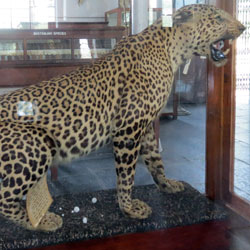
Forest College Museum is located 3.5 Kilometers north from the Dayangere railway junction. This college is very old and unique in its kind! You can see here remains of plants and fossils of animals.
Explore More
Dedicated to the memory of the great Queen Durgavati, it is her memorial and museum, which houses a fine collection of sculptures, inscriptions and prehistoric relics. The museum has a good collection of artifacts and also has a section dedicated to artifacts and photos related to Mahatma Gandhi.
Explore More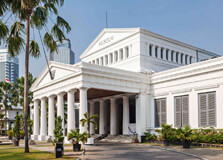
The Jakarta History Museum, also known as Museum Fatahillah, is one of the most prominent landmarks in Jakarta's Old Town (Kota Tua). Housed in a former Dutch colonial city hall, the museum offers a rich and immersive experience into the history of Indonesia’s capital. It serves as a portal into the past, showcasing Jakarta’s transformation from a small port town called Sunda Kelapa into the bustling metropolis it is today. With a vast collection of historical maps, paintings, furniture, and artifacts dating from the Dutch colonial period, the museum is a must-visit for those interested in culture, heritage, and the colonial history of Southeast Asia. How to Reach Jakarta History Museum, Jakarta The museum is located in Fatahillah Square, Kota Tua, West Jakarta. It is easily accessible by public and private transportation. The most convenient public option is by taking the TransJakarta bus system to the Kota Bus Station, which is just a short walk away from the museum. Alternatively, travelers can use the Commuter Line (KRL) and alight at Jakarta Kota Station, which is only 5 minutes away on foot. Taxis and ride-hailing services such as Gojek and Grab are also commonly used. For tourists staying in central Jakarta or near Monas (National Monument), the drive to Kota Tua takes around 30-45 minutes depending on traffic. Weather at Jakarta History Museum, Jakarta Jakarta has a tropical climate, characterized by high humidity and consistently warm temperatures throughout the year. The average temperature ranges between 26°C to 32°C (79°F to 90°F). The dry season typically runs from May to September, making it the best time to visit outdoor attractions like Kota Tua. The rainy season occurs from November to March, with January being the wettest month. Visitors are advised to carry an umbrella or raincoat if visiting during this period, although the museum itself is fully indoors and remains accessible regardless of the weather. Timings The Jakarta History Museum is open from Tuesday to Sunday, from 9:00 AM to 3:00 PM. It is closed on Mondays and public holidays. Visitors are advised to arrive early in the day, especially on weekends, to avoid large crowds and to enjoy a more peaceful exploration of the exhibits. Why Famous for Jakarta History Museum, Jakarta? The Jakarta History Museum is famous for its location, historical significance, and extensive collection of colonial artifacts. It is one of the oldest and most visited museums in Indonesia. The building itself is a former Dutch city hall (Stadhuis) built in the 18th century, and its architecture reflects Dutch colonial design. The museum is also well-known for its eerie underground prison cells and historical courtroom. Its central location in Fatahillah Square makes it a cultural hub, surrounded by other notable museums and colonial buildings. The museum provides a deep and well-documented look into Jakarta’s transformation over the centuries. Entry and Visit Details about Jakarta History Museum, Jakarta The entrance fee for the Jakarta History Museum is affordable, typically around IDR 5,000 for local adults and IDR 10,000 for international visitors. Discounts are available for students, children, and senior citizens. Tickets can be purchased directly at the gate. The museum does not usually require prior booking, but guided group tours should be arranged in advance. Visitors are welcome to explore on their own or hire a local guide for a more in-depth experience. Photography is allowed, but flash photography and video recording may be restricted in certain sections. History and Architecture The Jakarta History Museum is housed in a building that was originally constructed in 1710 by the Dutch East India Company (VOC) as the administrative headquarters for Batavia, the old name for Jakarta. The building is a prime example of 18th-century Dutch colonial architecture, featuring high ceilings, thick walls, and symmetrical design. The front facade is adorned with a classic Dutch-style gable and clock tower. Inside, the museum is divided into various rooms, each dedicated to a specific era or aspect of Jakarta’s history, including pre-colonial times, the Dutch occupation, and Indonesia's struggle for independence. The underground cells beneath the building were once used to imprison and torture locals, adding a somber layer to the historical narrative. Things to Do at Jakarta History Museum, Jakarta There are several engaging activities and attractions for visitors at the museum and its surrounding area: Explore the Exhibits: View antique furniture, ceramics, paintings, and historical documents tracing Jakarta’s development. Visit the Underground Prison Cells: Experience the dark side of colonial history with a visit to the dungeon-like jail cells. Take Photos at Fatahillah Square: Capture the beautiful colonial buildings and vibrant street life of Kota Tua. Try Local Street Food: Enjoy traditional Indonesian snacks from local vendors around the square. Explore Nearby Museums: Visit the Wayang Museum (puppetry) and Museum Bank Indonesia, both within walking distance. Facts about Jakarta History Museum, Jakarta The building was used by the Dutch as the City Hall of Batavia from 1710 until Indonesia’s independence in the mid-20th century. It was officially turned into a museum in 1974 and is now managed by the Jakarta provincial government. The museum’s courtyard often hosts cultural performances and community events. The museum’s clock tower is one of the oldest surviving European structures in Jakarta. Several historical figures, including Prince Diponegoro, were once imprisoned in its underground cells. Tips for Visiting Jakarta History Museum, Jakarta Arrive early in the day to beat the heat and avoid large crowds. Wear comfortable clothing and walking shoes as you may explore nearby attractions on foot. Hire a local guide if you're interested in learning detailed stories behind the exhibits. Bring water, especially if visiting during the dry season. Respect the historical space by not touching artifacts or defacing property. Combine your visit with other Kota Tua highlights for a full-day cultural experience.
Explore More
The Royal Automobile Museum is located in King Hussein Park in Amman, which is easily accessible by car, taxi, or public transport. If you're staying in downtown Amman, the museum is just a short 10-15 minute drive away, and taxis are readily available throughout the city. Public buses also run to the King Hussein Park area, though using a taxi or ride-sharing app (like Uber or Careem) is more convenient, especially for tourists unfamiliar with the local routes. The museum is situated in a serene part of the city, surrounded by green spaces, making it a pleasant place to visit for both locals and tourists. Weather Around Royal Automobile Museum, Amman Amman experiences a Mediterranean climate with hot summers and mild winters. The summer months (June to August) can get quite warm, with temperatures reaching 30°C (86°F) or higher. However, the museum is indoors and air-conditioned, making it a comfortable experience year-round. Spring (March to May) and autumn (September to November) are the best seasons to visit, as the weather is pleasant and ideal for exploring the museum and its surroundings. Winters (December to February) in Amman are cooler, with temperatures averaging around 10°C (50°F), so it’s a good idea to bring a light jacket or sweater if visiting during this time. Timing of the Royal Automobile Museum, Amman The Royal Automobile Museum operates every day of the week, with standard hours from 10:00 AM to 6:00 PM. However, it’s always a good idea to check their website or contact the museum directly, as opening hours may vary on public holidays or special occasions. The museum is a great place to spend a few hours during the day, and visiting during the early hours of the day is recommended to avoid crowds, especially on weekends when the museum tends to be busier. Why Is the Royal Automobile Museum Famous? The Royal Automobile Museum is famous for its extensive and unique collection of cars, some of which have historical significance to the Jordanian royal family. Among its most notable displays are the vehicles once owned by King Hussein, the founder of modern Jordan. These include luxury cars, military vehicles, and even some rare classic cars from the early 20th century. The museum is famous not only for its stunning collection but also for the way it blends automobile history with the personal legacy of the Jordanian monarchy. It offers a glimpse into the royal family's lifestyle and the evolution of automobile technology, making it a one-of-a-kind experience in Jordan. Entry and Visit Details About the Royal Automobile Museum, Amman The Royal Automobile Museum has a reasonable entry fee, which is approximately 3 JOD (Jordanian Dinars) for adults. Entry is free for children under the age of 12, and there are also discounts for students and senior citizens. The museum provides a rich experience with its well-curated displays, and it’s a family-friendly destination, making it a great option for those traveling with children. The museum offers informative signage in both English and Arabic, and visitors can explore the exhibits at their own pace. For those who wish to gain deeper insight into the exhibits, guided tours are available, which can enhance the experience by providing historical context and anecdotes about the royal collection of automobiles. History and Architecture of the Royal Automobile Museum The Royal Automobile Museum was established in 2003 to showcase King Hussein’s personal collection of cars and to celebrate the history of automobiles in Jordan. The museum is housed in a modern building within King Hussein Park, and its architecture is designed to complement the surrounding natural beauty of the park. The building itself is spacious and well-lit, with large display areas to showcase the vehicles in an elegant and organized manner. The museum is designed to highlight both the technical advancements in automobile design and the royal family’s contribution to the country’s cultural and technological development. It features a mix of classic, luxury, and military vehicles, giving visitors an intimate look into the lifestyle and legacy of the Jordanian monarchy. Things to Do at the Royal Automobile Museum, Amman Visitors to the Royal Automobile Museum can enjoy several activities that go beyond simply admiring the vehicles: Explore the Cars: The museum features an impressive collection of over 70 vehicles, including vintage cars, luxury cars, military vehicles, and even motorcycles. Some of the most iconic cars once belonged to King Hussein and his family. Take a Guided Tour: While the museum has informative signage, guided tours are available for those who want a deeper understanding of the cars’ historical significance, particularly the royal collection. Learn About the Evolution of Automobiles: The museum provides a detailed history of automobile development, showcasing the technological progress made over the years and how it intersects with the royal family’s experiences. Photograph the Cars: The museum offers plenty of opportunities to take photographs of the beautiful cars on display, making it an ideal location for car enthusiasts and photographers alike. Visit the Gift Shop: The museum has a small gift shop where visitors can purchase unique memorabilia, including scale models of the cars on display, books on automobiles, and other souvenirs. Facts About the Royal Automobile Museum, Amman The museum houses more than 70 cars, including those owned by King Hussein and his family. Some of the most famous cars in the collection include a 1960 Mercedes-Benz 600 and a 1964 Rolls-Royce Silver Cloud III. The museum also features military vehicles used by the Jordanian armed forces. The museum is located within King Hussein Park, one of the largest and most beautiful parks in Amman. The museum is designed to be family-friendly, offering educational exhibits that cater to both adults and children. Tips for Visiting the Royal Automobile Museum, Amman Arrive Early: It’s best to visit in the morning when the museum is less crowded, giving you more time to explore the exhibits without feeling rushed. Wear Comfortable Shoes: The museum is spacious, and you’ll be walking around quite a bit, so be sure to wear comfortable shoes for a more enjoyable visit. Check for Special Events: The museum occasionally hosts special events, exhibitions, and lectures. It’s worth checking the museum’s website before your visit to see if any special events are happening. Bring a Camera: The cars on display are not only fascinating but also visually stunning. Don’t forget your camera to capture your favorite moments. Learn More: Take advantage of the guided tours for a deeper understanding of the cars and their significance in Jordan’s history. Conclusion The Royal Automobile Museum in Amman is a unique and enriching destination for anyone interested in the history of automobiles and the legacy of the Jordanian monarchy. With its impressive collection of cars, educational exhibits, and family-friendly atmosphere, the museum offers an engaging experience for visitors of all ages. Whether you’re a car enthusiast, a history lover, or simply looking for something new to explore in Amman, the Royal Automobile Museum is definitely worth a visit.
Explore More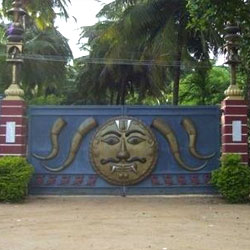
Karnataka Folk Museum Located on the Kumara Park West, Sheshadripuram, this folk Museum is managed by Karnataka Janapada Trust and has an impressive collection of folk music and videotapes of folk dances. Many unique masks, colourful artifacts and costumes have been displayed. The Janapada Loka or the folk museum is situated about 53 Kms from Bangalore on the Bangalore Mysore highway. It is a mere 3 Kms from ramanagaram. This little known museum, devoted to covering Karnataka diverse folk life, is situated on 15 acres of land and the entire area is covered with trees. As a result even though there is much ground to be covered, all the paths leading to the different buildings are shady. The artifacts are housed in three little buildings - Lokamahal, Lokamatha Mandira and Chitrakuteera. The Lokamahal is the most comprehensive, housing a number of interesting folk puppets, utensils, instruments, weapons and masks. While a variety of utensils, baskets, and earthen jars used to store grain and pickles are displayed in the Lokamatha Mandira, the Chitrakuteera has a number of photographs covering different aspects of folk life.
Explore More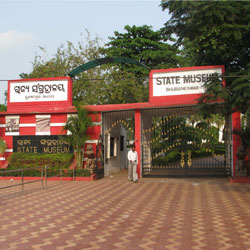
It houses a rich collection of sculptures, coins, copper plates, stone inscriptions, lithic and bronze age tools, rare manuscripts written on palm leaves, traditional and folk musical instruments. Rare epigraphic records are preserved in the Epigraphy Gallery. A visit to the museum provides an instant overview of Orissa as it was and of course still is. The Handicrafts Museum has a splendid collection of stone sculptures, patta paintings, brass castings, horn toys and Orissa's famous silver filigree work. The Tribal Museum provides an insight into the Tribal Culture of Orissa. The genesis of the Odisha State Museum goes back to the year 1932, when two notable historians Prof. N. C Banerjee & Prof. Ghanshyam Dash of Ravenshaw College, Cuttack started collection of archaeological treasures from various places. The small museum was then housed within the premises of the College. In 1938, by a suitable order, the Government of Odisha transformed this nucleus into the Provincial museum of Odisha. Maintaining close contact with the general public and the Archaeological Department of the Government of India and other States, the Museum continued to grow. In order to popularize the cultural exhibits of the Museum, leaflets printed both in Odia and English were published in the Samaj and the New Odisha and copies of the same were sent to officials and the public to create a sense of awareness about the significance of the Museum.
Explore More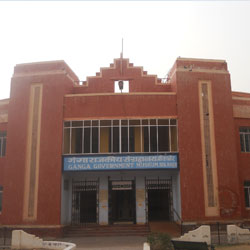
Ganga Golden Jubilee Museum also has some collectibles which more than somewhat saying historical like old photographs, trophies, shikar objects early cameras and movie projectors and weapons. This museum is said to be the best in Rajasthan and is now run by the Government of Rajasthan. It has a superb collection of terra-cotta ware, paintings, coins, sculptures and arms. Inauguration Bikaner Museum was founded by his Majesty Ganga Singh, on the occasion of his golden jubilee in 1937, when he completed fifty years of his reign. A big celebration was held and dignitaries from overseas graced the festivity. Lord Linlithgow the then Viceroy of British India did inauguration of this museum.At first the museum was housed in a sand stone building near the Lalgarh palace, but it was rather a small building. So a mew building was constructed and his majesty Karni Singh declared it open to visitors on September 4/1954. In the first six years of its inauguration it remained in charge of the state government of Bikaner. Then in 1950 it was handed over to the state government of Rajasthan. Most fascinating Twelve Months Paintings of this series reflect the mental agony of a young girl who is in love with a noble man of warrior community, who has gone out to a war. In these paintings the mood of this girl, is depicted. She is shown pining, as many months have been spent without the caresses and embraces of her lover. Further she is shown in other paintings revealing the cruel time, that is eating up her youth and charming perfection of her anatomy. She is shown in her agony through the various seasons and natural phenomenon. Witnessing the moon she says, 'O Moon you know my condition, that when the whole world sleeps during night, I keep awake and you give me company, therefore you are my true companion. Now please do me a favour that since you may see the whole world, while you keep shining in the sky so find it out where my lover is and give him my message of love and good wishes and tell him to come immediately to me". Visiting hours 10.00 A.M. to 4.30 P.M. Weekly holiday Every Friday.
Explore More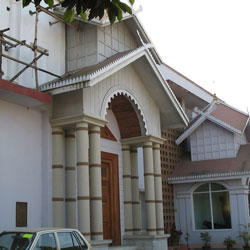
Near the Pologround, is the interesting museum and is the best place to get a glimpse of the Manipur history and culture. It has a fairly good display of Manipur's heritage. It is open from 10 am to 4.30 pm on all days except Sundays and Holidays.
Explore More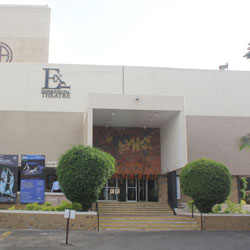
National Centre of Performing Arts
The National Center of Performing Arts was established in 1966 to preserve and promote India rich cultural heritage in classical and folk music, dance and drama. Apart from its traditional art schools, India also has a contemporary art lineage that began in the early fifties. While pioneers like MF Hussain and FN Souza spearheaded this modern art movement, Mumbai was the cradle of these brave new aesthetes. Today, contemporary Indian art is known to the world over, which can be viewed at the National Gallery of Modern Art bang opposite the Prince of Wales Museum. Converted from an old public hall, this dynamic, three tiered structure houses collections from India's best known living artists providing a convenient overview of the country's contemporary art scenario.
Explore More
The Durban Natural Science Museum, situated in the heart of Durban, South Africa, is a captivating institution that has been igniting curiosity and fostering a love for the natural world for over a century. As one of the oldest natural history museums in South Africa, it boasts an impressive collection of specimens and exhibits that showcase the rich biodiversity and geological history of the region and beyond. From awe-inspiring dinosaur skeletons to intricate displays of insects, mammals, birds, and marine life, the museum offers an engaging and educational experience for visitors of all ages. Its commitment to research, conservation, and public education makes it a vital cultural and scientific resource in Durban. How to reach Durban Natural Science Museum, Durban The Durban Natural Science Museum is conveniently located in the Durban Central Business District (CBD), making it easily accessible by various modes of transportation: By Car: If you are driving, the museum is located at City Hall, Anton Lembede Street (formerly Smith Street). There are several parking garages and street parking options available in the CBD, although it can get busy during peak hours. It's advisable to check parking availability and rates beforehand. By Taxi or Ride-sharing Services: Taxis and ride-sharing services like Uber and Bolt are readily available in Durban and can drop you off directly at the City Hall entrance. By Public Transport: Durban's public bus system has numerous routes that serve the CBD, with several stops within walking distance of City Hall. The museum is also relatively close to the main taxi ranks in the city center. By Walking: If you are already in the CBD, the museum is easily reachable on foot. Look for the prominent City Hall building, which houses the museum. Weather in Durban Durban experiences a subtropical climate characterized by warm, humid summers and mild, dry winters. During the summer months (December to February), average high temperatures hover around 30°C, accompanied by high humidity and occasional rainfall, often in the form of afternoon thunderstorms. The winter months (June to August) are generally sunny and pleasant, with average daytime temperatures around 23°C. Evenings can be cooler during winter. As the Durban Natural Science Museum is primarily an indoor attraction, the weather outside will not significantly impact your visit. However, it's always a good idea to check the forecast if you plan on spending time outdoors before or after your museum visit. Timing The Durban Natural Science Museum typically has specific opening and closing hours, which may vary slightly depending on the day of the week or public holidays. It is recommended to check the official website of the Durban Natural Science Museum or the eThekwini Municipality for the most accurate and up-to-date information on their operating hours before planning your visit. Generally, museums tend to be open during standard business hours, usually from morning to late afternoon. Knowing the exact timings will help you make the most of your visit and ensure you have enough time to explore all the exhibits. Why famous for Durban Natural Science Museum, Durban? The Durban Natural Science Museum is famous for several compelling reasons: Historical Significance: As one of the oldest natural history museums in South Africa, it holds a significant place in the country's scientific and cultural heritage. Extensive Collections: The museum boasts a vast and diverse collection of natural science specimens, covering zoology, paleontology, geology, and entomology. Dinosaur Exhibits: The impressive dinosaur exhibits, including skeletal remains and models, are a major draw for visitors of all ages. Marine Life Displays: Durban's proximity to the coast is reflected in the museum's excellent displays of marine life, showcasing the rich biodiversity of the Indian Ocean. Educational Value: The museum plays a crucial role in educating the public about the natural world, fostering an appreciation for science and conservation. Research Contributions: The museum is actively involved in scientific research, contributing to our understanding of the region's natural history. Central Location: Its location within the iconic City Hall building in the CBD makes it easily accessible to a wide range of visitors. Entry and visit details about Durban Natural Science Museum, Durban Visiting the Durban Natural Science Museum is generally accessible and affordable. Here are some details regarding entry and your visit: Entry Fee: Typically, there is a nominal entrance fee to visit the Durban Natural Science Museum. The fees are usually very reasonable and may vary for adults, children, students, and senior citizens. It's best to check the official website for the current fee structure. Group Bookings: The museum often caters to school groups and other organized tours. Information on group bookings and educational programs can usually be found on their website or by contacting the museum directly. Accessibility: City Hall, which houses the museum, is generally accessible to people with disabilities. It's advisable to inquire about specific accessibility features if needed. Photography: Photography is usually permitted for personal use, but flash photography might be restricted in certain areas to protect sensitive specimens. Commercial photography or filming may require prior permission. Duration of Visit: The amount of time you spend at the museum will depend on your interests. Allow at least a couple of hours to explore the main exhibits. History The Durban Natural Science Museum has a long and distinguished history, dating back to its establishment in 1887. Initially, it was housed within the Durban Town Hall before moving to its current location in the City Hall building when it was completed in 1910. Over the decades, the museum has grown significantly, both in terms of its collections and its role in public education and scientific research. It has played a vital part in documenting and preserving the natural heritage of the KwaZulu-Natal region and has adapted to the changing needs of the community, remaining a relevant and engaging institution for over a century. Architecture The Durban Natural Science Museum is located within the Durban City Hall, which is an impressive example of Edwardian Neo-Baroque architecture. Completed in 1910, City Hall is a grand and imposing building characterized by its symmetrical facade, ornate detailing, and prominent dome. The museum itself occupies various sections within this historic structure. While the museum's internal architecture is functional and designed to showcase the exhibits effectively, it is inherently linked to the grandeur and historical significance of the City Hall building. The high ceilings, large windows, and period features of the building provide a unique and atmospheric backdrop for the natural science displays. Things to do A visit to the Durban Natural Science Museum offers a wide range of engaging activities: Explore the Dinosaur Exhibits: Marvel at the impressive dinosaur skeletons and learn about prehistoric life. Discover Local Wildlife: Observe displays of mammals, birds, reptiles, and insects found in the KwaZulu-Natal region. Explore Marine Life: Discover the fascinating creatures that inhabit the Indian Ocean through detailed exhibits. Learn about Geology: Examine displays of rocks, minerals, and fossils, gaining insights into the Earth's history. Visit the Entomology Section: Be amazed by the intricate world of insects and other arthropods. Attend Educational Programs: Check if the museum offers any talks, workshops, or guided tours during your visit. Browse Special Exhibitions: The museum often hosts temporary exhibitions on specific natural science topics. Take Photos: Capture memories of your visit with photographs of the fascinating exhibits. Engage with Interactive Displays: Some exhibits may offer interactive elements to enhance the learning experience. Facts about Durban Natural Science Museum, Durban It is one of the oldest natural history museums in South Africa, established in 1887. The museum is located within the historic Durban City Hall building. It boasts extensive collections covering zoology, paleontology, geology, and entomology. The museum has impressive dinosaur exhibits, including skeletal remains. It features detailed displays of marine life from the Indian Ocean. The museum plays a significant role in public education and scientific research. Entry fees are typically nominal and affordable. The museum has been inspiring curiosity about the natural world for over a century. Tips about Durban Natural Science Museum, Durban Check the museum's official website for the most up-to-date information on opening hours and admission fees. Allow ample time to explore all the exhibits, especially if you have specific areas of interest. Consider visiting during off-peak hours or weekdays to avoid crowds. Bring your camera to capture the fascinating displays. Read the information panels and descriptions to learn more about the exhibits. If you are visiting with children, look out for exhibits that are particularly engaging for younger audiences. Be respectful of the exhibits and avoid touching specimens unless explicitly permitted. Take advantage of any guided tours or educational programs offered by the museum. Check for special or temporary exhibitions that might be on display during your visit. Utilize the restroom facilities available within City Hall.
Explore More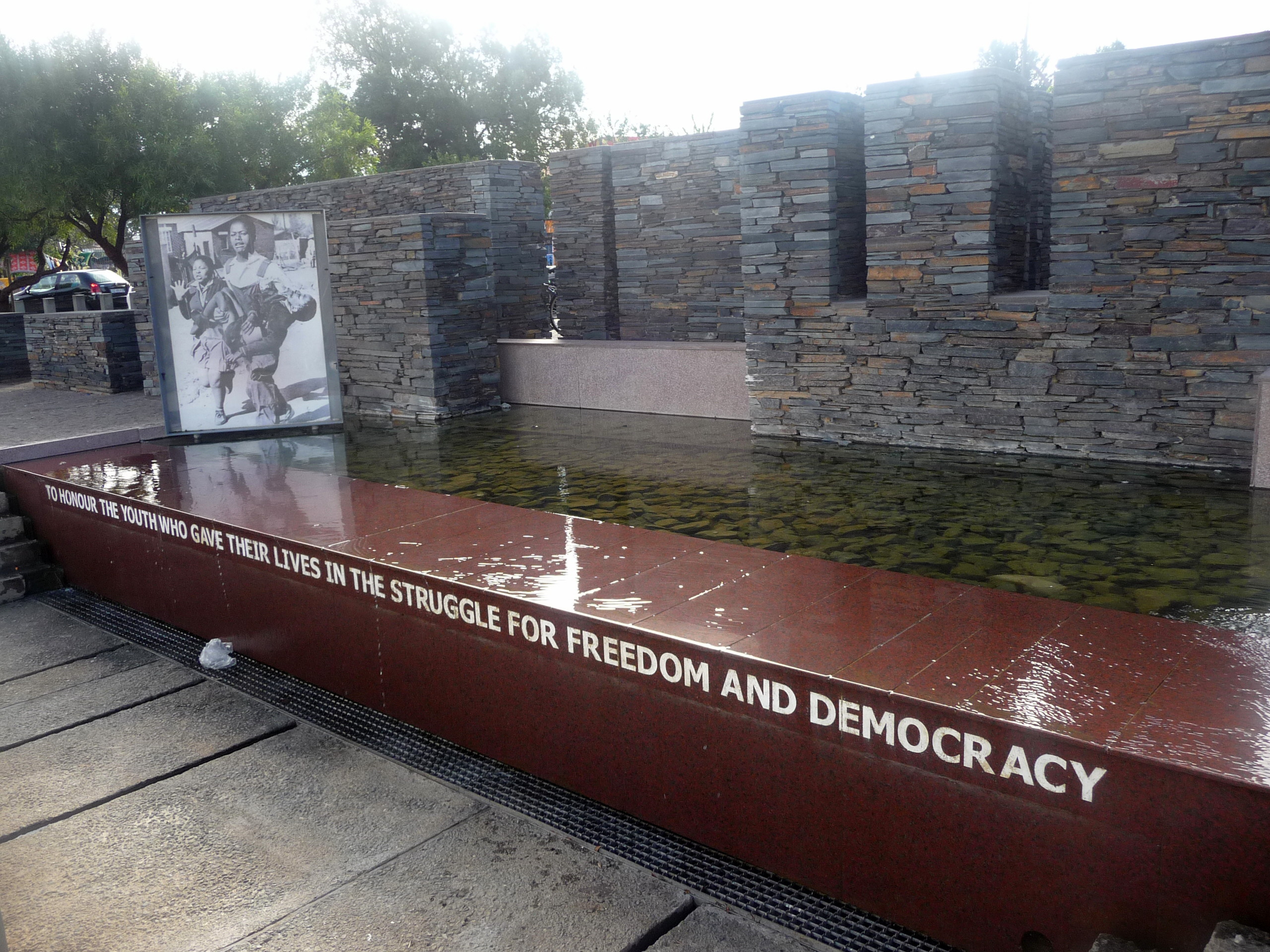
The Hector Pieterson Memorial stands in Johannesburg, South Africa in the honor of Hector Pieterson, who was shot on June 16, 1976, when he stood along a host of students protesting against apartheid. About 20 students were killed on that fateful day but Hector’s photograph published in The World newspaper. Hector attained iconic stature in the struggle against apartheid. June 16 is celebrated as the National Youth Day in the memory of this hero of the Soweto uprising.
Explore More